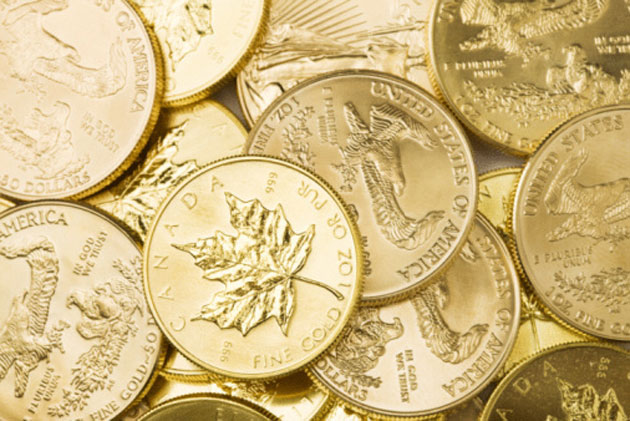What to Put in an RRSP

Stocks, bonds, ETFs, mutual funds – is there a perfect RRSP security?
There has been a lot of debate over what types of investments should go into an RRSP. Of course, if you have both a non-registered account and one or more registered plans (RRSP, RRIF, TFSA, etc.) it makes sense to put those securities that attract the highest rate of tax into a registered account. That includes all interest-bearing securities, such as GICs and bonds.
But that’s just the starting point. Building a proper RRSP portfolio over time requires planning and discipline. It may some day be worth tens or even hundreds of thousands of dollars, so you need to get it right.
There is no perfect RRSP investment. The closest, in my view, is a bond ETF. It’s low cost, provides immediate diversity, and generates taxable cash flow that is sheltered in the RRSP.
But few people would want to build their RRSPs exclusively with bond ETFs. Yes, they have done quite well over the past decade, with the iShares Canadian Universe Bond Index ETF (TSX: XBB) recording an average annual compound rate of return of 5.4 per cent over the ten years to Jan. 31. But sooner or later interest rates will start to rise and this fund’s performance will tail off. Plus, it’s never a good idea to put all your financial eggs in one basket.
So the starting point is to decide on an appropriate asset allocation for your RRSP. In doing so, remember that this is really a pension plan and that’s the mentality you should bring to decision-making process.
My RRSP Portfolio, which was created for my Internet Wealth Builder and updated this month, has performed well, with an average annual compound rate of return of 14.53 per cent in its first three years. But it is aggressively structured, with 22 per cent of its assets in bond funds and cash and the rest in equity funds and stocks. That’s a reasonable asset mix for a younger person (say under 50) with a time horizon of at least 15 years until retirement. But most older people should use a more conservative allocation with a greater emphasis on fixed-income securities to cushion the impact of any market crashes.
In my book RRSPs: The Ultimate Wealth Builder I recommend these allocations for older people. Growth refers to securities such as stocks, equity mutual funds and ETFs, REITs, etc.
Age 51-60
| Asset Type | MinimumAllocation | MaximumAllocation |
| Cash | 5 per cent | 15 per cent |
| Fixed Income | 40 per cent | 60 per cent |
| Growth | 40 per cent | 55 per cent |
Age 61-65
| Asset Type | MinimumAllocation | MaximumAllocation |
| Cash | 5 per cent | 20 per cent |
| Fixed Income | 50 per cent | 70 per cent |
| Growth | 30 per cent | 40 per cent |
Post Retirement
| Asset Type | MinimumAllocation | MaximumAllocation |
| Cash | 10 per cent | 20 per cent |
| Fixed Income | 50 per cent | 75 per cent |
| Growth | 20 per cent | 30 per cent |
This is a very conservative approach and many financial advisers will disagree with me, but I don’t apologize for it. The closer you come to retirement, and after you stop work, the more important it is to protect your savings against a catastrophic financial event. This is especially true if the RRSP will represent a significant portion of your retirement income (40 per cent+).
People with top-level defined benefit pension plans or other significant sources of income can afford to use more aggressive allocations in their later years but don’t go overboard. We don’t know how long we will live and no one wants to be in a situation where the money runs out.
So once you’ve determined your asset allocation, what should you put into the plan apart from some cash and the aforementioned bond ETFs? There’s an argument to be made for only using ETFs because of their low cost (keeping expenses down is one of the keys to RRSP success). For example, the iShares S&P/TSX 60 Index ETF (TSX: XIU), which is the closest thing we have to the Dow, shows a 10-year average annual compound rate of return of 7.97 per cent to Jan. 31 and has an MER of only 0.17 per cent.
Only a few actively managed Canadian equity funds beat that and most by less than a percentage point. A notable exception was the Mawer Canadian Equity Fund. It has a 10-year average annual rate of return of 10.17 per cent and an MER of just 1.21 per cent. Yes, that’s a lot more than XIU, but the results speak for themselves.
However, when I looked at U.S. ETFs and mutual funds, it was a different story. The iShares Core S&P 500 ETF (CAD-Hedged) (TSX: XSP) had a 10-year average annual compound rate of return of 5.56 per cent to Jan. 31. Many U.S. equity mutual funds available to Canadians beat that handily (more than 100, in fact). One of them was the Beutel Goodman American Equity Fund, with an average annual return of 8.68 per cent over the period.
What about adding individual stocks? A careful selection of well-managed, conservative companies can significantly boost profits while keeping risk within reasonable confines.
The bottom line is that when it comes to your RRSP, don’t impose artificial limits on what type of securities to select. Some ETFs will work well, especially in the bond and Canadian equity categories. Actively managed mutual funds are a good choice for broad U.S. and international diversification. Add a few blue-chip stocks, both U.S. and Canadian, and you should be able to put together a winning combination.
For information on subscriptions to Gordon Pape’s newsletters go here.